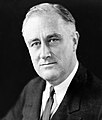Time 100: The Most Important People of the Century
Time 100: The Most Important People of the Century
Time 100: The Most Important People of the Century is a compilation of the 20th century's 100 most influential people, published in Timemagazine in 1999.
The idea for such a list started on February 1, 1998, with a debate at a symposium in Hanoi, Vietnam. The panel participants were former CBS Evening News anchor Dan Rather, historian Doris Kearns Goodwin, former New York governor Mario Cuomo, then–Stanford Provost Condoleezza Rice, publisher Irving Kristol, and Time managing editor Walter Isaacson.
In a separate issue on December 31, 1999, Time recognized Albert Einstein as the Person of the Century.
List categories
Time's article cites twenty persons in each of five broad categories: Leaders and Revolutionaries, Scientists and Thinkers, Builders and Titans, Artists and Entertainers, and Heroes and Icons.
Person of the Century
Of the 100 chosen, Albert Einstein was chosen as the Person of the Century, on the grounds that he was the preeminent scientist in a century dominated by science. The editors of Time believed the 20th century "will be remembered foremost for its science and technology", and Einstein "serves as a symbol of all the scientists—such as Fermi, Heisenberg, Bohr, Richard Feynman, ...who built upon his work".
The cover of the magazine featured the famous image of Einstein taken in 1947 by American portrait photographer Philippe Halsman.
Runners-up:
Controversies
It was debated whether Adolf Hitler and Benito Mussolini, responsible for World War II, The Holocaust, and the Second Italo-Ethiopian War, should have been made Persons of the Century for their influence in politics.
The argument was based on Time's explicit criterion that the persons chosen should have the greatest impact on this century, for better or worse. In the same 31 December 1999 issue of Time, essayist Nancy Gibbs addressed the topic with the article The Necessary Evil? In the article, she argues that Hitler and Mussolini "were simply the latest in a long line of murderous figures, stretching back to before Genghis Khan. The only difference was technology: Both Hitler and Mussolini went about their cynical carnage with all the efficiency that modern industry had perfected" and present several rhetorical questions such as "Evil may be a powerful force, a seductive idea, but is it more powerful than genius, creativity, courage or generosity?"[3]
Criticisms
The list of the top 20 Artists and Entertainers, in particular, was criticized for not including Elvis Presley, a decision Handy initially defended in the following way:
Handy was also asked to defend Time's decision to include the fictional character Bart Simpson from The Simpsons television series among the 100 most influential people of the 20th century, and he did so as follows:
The list also received criticism for its inclusion of Lucky Luciano, who was chosen in part because "he modernized the Mafia, shaping it into a smoothly run national crime syndicate focused on the bottom line". New York mayor Rudy Giuliani accused Time of "romanticizing" gangsters, and he stated: "The idea that he civilized the Mafia is absurd. He murdered in order to get the position that he had, and then he authorized hundreds and hundreds of murders." The selection was called an "outrage" by Philip Cannistraro, a Queens College professor of Italian-American studies, and Thomas Vitale, the New York State vice president of Fieri, an Italian-American charitable organization, criticized Time for "perpetuating myths" about Italian-Americans. However, Time business editor Bill Saporito defended the selection by describing Luciano as "kind of an evil genius" who had a deep impact on the underground economy. "We're not out there to heap glory on these people", he explained. "We're out to say these are people who influenced our lives." Saporito further noted that "every piece of merchandise that came out of the Garment District had a little extra cost in it because of organized crime.
From Wikipedia, the free encyclopedia






Comments
Post a Comment